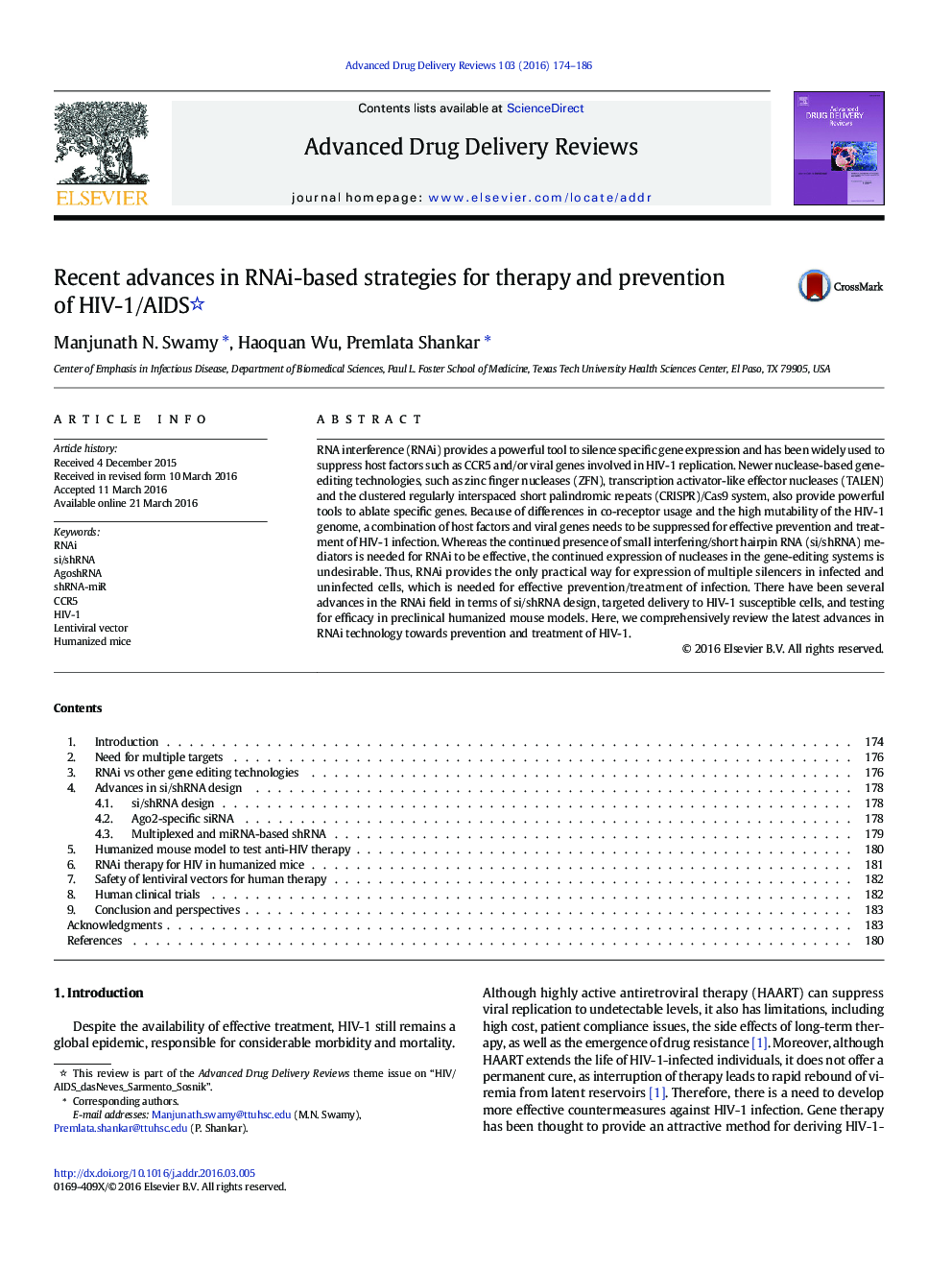| Article ID | Journal | Published Year | Pages | File Type |
|---|---|---|---|---|
| 2070690 | Advanced Drug Delivery Reviews | 2016 | 13 Pages |
RNA interference (RNAi) provides a powerful tool to silence specific gene expression and has been widely used to suppress host factors such as CCR5 and/or viral genes involved in HIV-1 replication. Newer nuclease-based gene-editing technologies, such as zinc finger nucleases (ZFN), transcription activator-like effector nucleases (TALEN) and the clustered regularly interspaced short palindromic repeats (CRISPR)/Cas9 system, also provide powerful tools to ablate specific genes. Because of differences in co-receptor usage and the high mutability of the HIV-1 genome, a combination of host factors and viral genes needs to be suppressed for effective prevention and treatment of HIV-1 infection. Whereas the continued presence of small interfering/short hairpin RNA (si/shRNA) mediators is needed for RNAi to be effective, the continued expression of nucleases in the gene-editing systems is undesirable. Thus, RNAi provides the only practical way for expression of multiple silencers in infected and uninfected cells, which is needed for effective prevention/treatment of infection. There have been several advances in the RNAi field in terms of si/shRNA design, targeted delivery to HIV-1 susceptible cells, and testing for efficacy in preclinical humanized mouse models. Here, we comprehensively review the latest advances in RNAi technology towards prevention and treatment of HIV-1.
Graphical abstractFigure optionsDownload full-size imageDownload high-quality image (113 K)Download as PowerPoint slide
